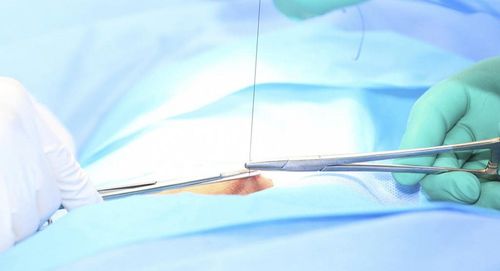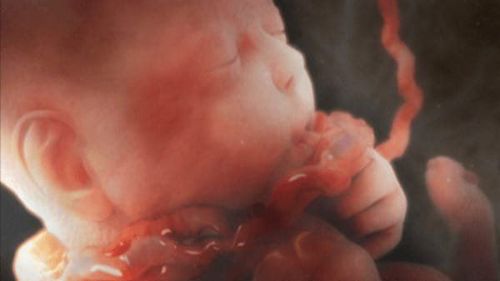This is an automatically translated article.
The article was professionally consulted by BSCK I Nguyen Xuan Tinh - Department of General Surgery, Vinmec Phu Quoc International General Hospital.Postpartum pain relief helps women quickly recover their health after giving birth, with less pain after giving birth. Pain relief during childbirth does not affect obstetric indications. When there is an obstetric indication, the mother will have a birth or caesarean section to ensure the safest for the mother and baby.
1. How to relieve labor pain
Pain relief during childbirth in obstetrics is divided into two groups of methods: Non-drug methods and drug methods.
Non-drug methods include: acupressure, acupuncture, psychotherapy, music, hypnosis, hydrotherapy, birth position, ... Medicinal methods include: Intravenous narcotic drugs pulse, gas, and regional anesthesia (epidural anesthesia), spinal anesthesia or a combination of epidural analgesia - spinal anesthesia Currently, the method of epidural anesthesia is the most effective and most suitable for both mother and baby for both normal delivery or caesarean section In particular, the use of this pain reliever injection can control the pain relief effect of the pregnant woman during labor. The doctor can flexibly adjust the type of pain reliever. What is the appropriate dose and intensity of the drug? Because each person's body is often different, there are cases where the same drug, the same dose, but some people have good pain relief and there will also be others. i don't match.
2. Painkillers during normal delivery
Painkillers during childbirth are often used effectively and safely for mothers and babies today, which is an epidural or painless delivery. Painless delivery is an epidural to relieve pain. Local anesthetic is injected into the epidural space (not in the spinal cord, which is located outside the spinal cord, starting from the first cervical vertebra to the sacrum). With specialized techniques, the anesthesiologist will resuscitate this cavity and insert a small catheter into it, the anesthetic is continuously infused to relieve pain until the birth is complete. In painless delivery, spinal anesthesia is rarely performed alone, usually spinal anesthesia (a very small amount of anesthetic) combined with epidural anesthesia. Spinal anesthesia allows for immediate pain relief after the injection. As for local anesthesia, after the first large dose of local anesthetic, it takes about 10 minutes for the pregnant woman to get rid of the pain.

3. Do pain relievers during childbirth have any effect on the mother's strength?
Local anesthetics used in local anesthesia for pain relief are usually used in very low concentrations, just enough to inhibit pain sensation without affecting movement. So, the push to give birth will take place almost normally, pregnant women can rest assured.
The continuous infusion of local anesthetic into the intracranial cavity, in some pregnant women, sometimes completely painless, or there is a feeling of heaviness in the legs, the anesthesiologist must adjust the dose accordingly. The goal of painless labor is to reduce pain sensation by 70-80%, leaving only 20-30% of pain, enough for the mother to know the contraction is causing pain, and to coordinate pushing well when the cervix is fully dilated.
4. Should pain relief injections be given during cesarean section?
For caesarean section, just epidural anesthesia to relieve pain during surgery and maintain pain relief after surgery is enough, no need for spinal anesthesia. For women who can relieve obstetric pain by using local anesthesia, during labor monitoring, if there is an indication for a cesarean section, when entering the operating room, the anesthesiologist will continue to inject anesthetic with large concentrations and doses for surgery. Postoperatively, these women may benefit from continued epidural analgesia after surgery.
5. Is epidural anesthesia dangerous for the baby?
Anesthesia used to anesthetize the NMC does not pose any danger to the baby. Anesthesia only blocks nerve transmission (feeling pain) in the mother, not toxic to the baby. Maternal blood pressure must be kept stable and monitored regularly, if necessary can be adjusted with medication.
6. Possible side effects for the mother

You may experience some temporary discomfort due to the drop in blood pressure. Sometimes chills and itching may also occur. You may feel numbness in your legs, your legs are a little heavy, or you may have difficulty lifting your legs. You may experience transient difficulty urinating and may need a catheter. However, adverse effects or side effects can occur even when the mother is closely monitored and the resuscitative anesthesiologist (GMHS) has taken every precaution to avoid them. Anesthesiologists will provide specific treatment to minimize or eliminate these defects.
Postpartum back pain: Some women believe that postpartum back pain is caused by an epidural, but no study has shown that postpartum back pain is caused by an epidural. In fact, 50% of women who do not use the "painless delivery" method when giving birth, still have back pain after giving birth. Back pain after childbirth can be caused by the following reasons: change in spine shape during pregnancy, stretching ligaments in the lumbar spine region, inappropriate posture on the delivery table due to pain,... However, if the pain is painful due to the local anesthetic injection site, it will clear up on its own in 48 hours.
Epidural anesthesia technique has now been applied at Vinmec to help pregnant women gently give birth. At Vinmec, there is a team of experienced and professional anesthesiologists who will help pregnant women experience the safest painless labor.
Please dial HOTLINE for more information or register for an appointment HERE. Download MyVinmec app to make appointments faster and to manage your bookings easily.














